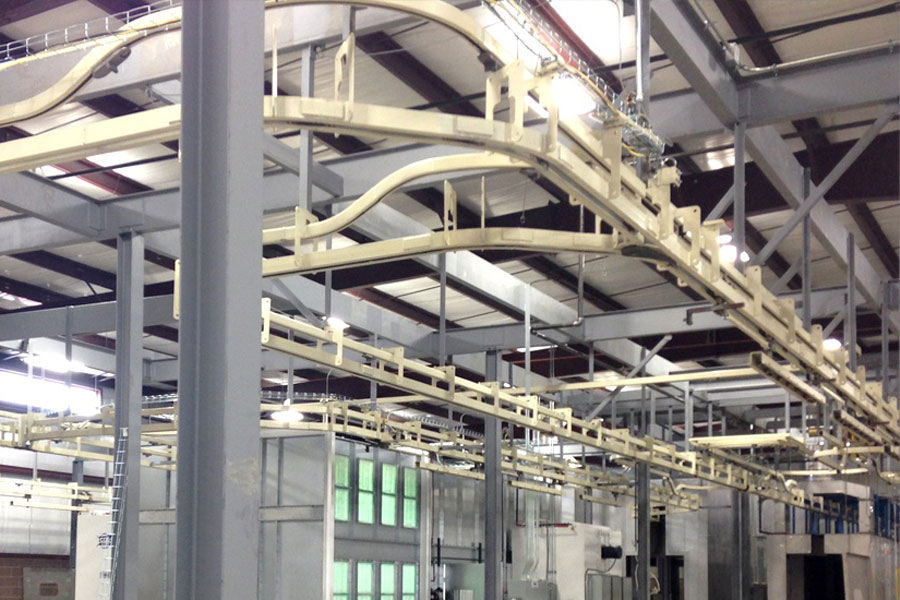
Businesses are always on the lookout for ways to trim expenses and enhance efficiency, particularly in critical operational areas like conveyor design and assembly. Properly designed conveyor systems make production lines more efficient and can lead to substantial cost savings.
This article will discuss three key strategies to achieve these savings: consulting with experts, utilizing conveyor simulation, and selecting versatile conveyor systems.
What is Conveyor Design?
Conveyor design involves creating a detailed plan and specification for the construction and layout of a conveyor system. This process is critical for ensuring that the conveyor system meets the specific needs of a business, including its material handling requirements, operational environment, and efficiency goals. The conveyor design covers the following:
Type of Conveyor System
Selecting the right type of conveyor (e.g., belt, roller, overhead, chain) based on the materials to be transported, the required speed, the direction of movement, and the environment in which the conveyor will operate.
Material and Load Specifications
This involves determining the size, weight, and nature of the materials the conveyor will carry, which influences the design in terms of strength, belt type, roller diameter, and motor size.
Layout and Configuration
Planning the path the conveyor will take, including straight sections, curves, inclines, and declines. The layout must consider the available space, the integration with other equipment, and the need for access points for maintenance and emergency stops.
Component Selection
Choosing the appropriate components for the conveyor system, such as belts, rollers, motors, drives, and control systems, ensures that they work together efficiently and can handle the expected load and operational demands.
Efficiency and Sustainability
The system should be designed to be energy-efficient and sustainable over its operational life. You need to consider factors like power consumption, maintenance needs, and the potential for future upgrades or modifications.
Effective conveyor design is about creating a system that is safe, reliable, and optimized for the specific operational needs of a business, balancing initial costs with long-term benefits in terms of efficiency, productivity, and flexibility.
Cost-Saving Tips for the Conveyor Design and Assembly Process
Saving money during the conveyor design and assembly process is key for efficient business operations. Below are 3 tips to help you cut costs without sacrificing quality:
Consult the Experts
The first step towards cost-saving in conveyor design and assembly is to seek advice from experienced professionals. Specialists in conveyor design, manufacturing, and maintenance bring invaluable expertise that can significantly impact the efficiency and cost-effectiveness of a system.
Working closely with experts can help businesses access custom solutions tailored to their specific industry needs, avoiding the pitfalls of a one-size-fits-all approach.
Experts help identify the most efficient and cost-effective materials and designs for a company’s unique operations. They can foresee potential challenges and offer solutions that might not be apparent to those without a deep understanding of conveyor systems.
Expert consultation can streamline the installation and integration process as well, reducing the likelihood of costly downtime and repairs. Their advice can help businesses avoid common mistakes that lead to unnecessary expenses.
Invest in Conveyor Simulation
Another vital strategy to save costs in the conveyor design and assembly process is investing in conveyor simulation. This technology allows businesses to visualize and test their conveyor systems before physical assembly. Simulations can identify potential issues, ensuring the system operates smoothly once installed. This preemptive approach is key to avoiding costly post-assembly modifications and downtime.
At Richards-Wilcox Conveyor, we stand out as one of the best major conveyor manufacturer that offers premier simulation services. Our unique offering enables businesses to refine their conveyor design and integrate with other equipment efficiently, saving time and money in the long run.
Consider Versatility in Your Conveyor Selection
Working with experts to design a customized, versatile conveyor system is a forward-thinking strategy that can lead to significant cost savings and operational efficiency over time. Systems that are versatile are designed to adapt to various products, environments, and future technological advancements, making them a smart investment for any business.
Adaptable systems offer the flexibility to change or expand as the needs of your industry evolve. This means businesses can save money by not having to purchase a new system every time there is a change in production demands or when new technologies emerge. Instead, a conveyor system that is designed with versatility in mind allows you to upgrade, adjust, or expand your system as new business objectives develop, preserving the original investment and minimizing the need for costly overhauls. These systems provide a robust foundation that can adapt to changing needs, ensuring that businesses remain competitive and cost-efficient in the dynamic market landscape.
Optimize Your Conveyor Design and Assembly
Consulting with experts ensures your conveyor system meets your specific needs perfectly. Simulation helps avoid costly issues by testing designs virtually before implementation. Choosing adaptable conveyor systems means your investment lasts longer, adapting to future needs and technological advancements. Applying these strategies will make your operations more efficient and cost-effective, giving you an edge in today’s competitive market. It’s about making smart choices now that will pay off in the future.
Don’t wait to improve your conveyor system. Contact us today to discuss how these cost-saving strategies can be applied to your business.